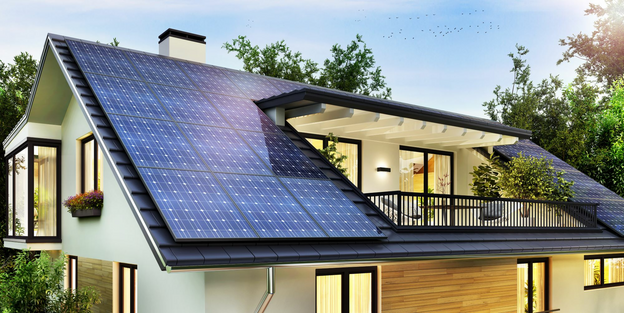
Have you ever considered the effectiveness of solar panels in areas that aren’t consistently bathed in sunshine throughout the year? It’s a common misconception that solar panels are only effective in sun-drenched, beachside locales.
In fact, solar energy serves as a feasible and cost-effective solution even in regions characterized by substantial cloud cover or shorter daylight hours. Case in point: Germany and the UK are both known for these conditions, yet they boast some of the highest solar panel installation rates worldwide.
This clearly demonstrates that with the right strategies, it’s possible to optimally harness the sun’s power using solar panels, even in less sunny locations. This article aims to guide you through these strategies:
- Choose High-Efficiency Solar Panels
High-efficiency panels are capable of producing more electricity than standard panels when exposed to the same amount of sunlight. These panels utilize advanced technologies and materials to achieve greater efficiency.
Some high-efficiency panels include thin-film solar panels and certain types of amorphous silicon panels. The design of these types of panels enables them to absorb a broader spectrum of sunlight. This allows them to outperform others in less sunny conditions.
Even though they might be pricier upfront, they could be a better investment in areas with limited sunshine.
- Optimize Panel Placement
The position and angle of your solar panels can significantly impact their efficiency. Even in less sunny areas, maximizing exposure to the sun can greatly increase the power you generate.
One way to do this is by using portable solar panels. The mobility of portable solar panels allows optimal positioning to capture sunlight throughout the day. Also, their ease of use, along with the ability to power a variety of applications, makes them a practical and accessible option.
In addition to portable solar power, rooftop installations and ground-mounted solar systems could also serve as viable options for efficiently harnessing sunlight. Contact your local solar professionals to assess your property and advise further.
- Install Additional Panels
Installing more panels can increase the surface area for catching sunlight, thus generating more power. If each panel produces less electricity due to limited daylight, installing more panels can help compensate for this.
You can contact a solar professional to conduct a site assessment. They may then advise on the best panel configuration for your specific situation to maximise solar energy generation.
- Use Solar Batteries
Solar batteries store excess power generated during the day for use during nighttime or power outages.
Batteries can help ensure a consistent power supply in areas with unpredictable or limited sunlight. This stored energy can be beneficial during the early evening when solar production is winding down, but household energy demand is still high.
- Regular Maintenance And Cleaning
Solar panels can accumulate dust, debris, and snow, hindering their efficiency by blocking sunlight.
Regular cleaning and maintenance can keep your panels working optimally, even in less sunny climates. Consider scheduling regular inspections and cleanings to maximise your panel’s efficiency and lifespan.
A well-performing solar system can increase your home’s energy efficiency, thus significantly increasing its market value.
- Invest In A Solar Tracker
Solar trackers actively adjust the position of your solar panels to follow the sun’s path throughout the day. This maximises the amount of sunlight they receive.
This technology can significantly boost the efficiency of your solar panels. It’s like giving your panels a sun-seeking ability that helps them make the most of the available sunlight.
- Consider Community Solar
Community solar can be an excellent alternative if your property could be better for solar panels due to shading, orientation, or other factors.
You can buy or lease a portion of a solar farm with community solar. The electricity generated by this portion is then credited to your electricity bill, offsetting the electricity you draw from the traditional power grid.
Even in less sunny areas where harnessing solar power might seem challenging, there’s still potential to benefit from solar energy.
Note: Solar panels are not just for sunny locations. They can also be a worthwhile investment in less sunny areas with the right strategic and technological enhancements. However, it’s essential to understand that most of these enhancements can significantly increase the cost of your solar installation.
Final Thoughts
As shown, areas with less sun can still provide substantial benefits when using solar energy. You can harness the sun’s power more effectively using the strategies shared here.
As with any investment, it’s essential to research and consult with professionals to find the best solution for your specific circumstances.
Reach out to solar professionals in your area and start your journey towards renewable, sustainable energy today.




 POSTED BY
POSTED BY 

